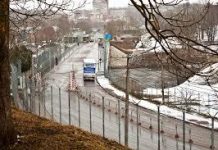
The above image is for representational purposes only.
The primary contractors for the Main Ground Combat System (MGCS) have established a joint venture to represent the defense industry in forthcoming contract negotiations with Germany and France. This entity, based in Europe, consolidates the interests of KNDS Germany, KNDS France, Thales, and Rheinmetall, who sit at the apex of a broader supply chain. These contractors are tasked with developing an advanced armored vehicle while simultaneously demonstrating the cohesion of Europe’s defense industry.
In a collective statement, the companies emphasized that this business formation marks a “critical advancement” toward deploying the new system by 2040. The MGCS initiative is one of two pivotal defense programs led by France and Germany. After prolonged discussions over project responsibilities, the two nations agreed to assign Germany the lead role in the development of the tank, while France would head the development of a sixth-generation fighter, the Future Combat Air System.
Officials have clarified that the MGCS project is not simply about delivering a new main battle tank for Germany and France, which may later be adopted by additional European nations. Rather, the goal is to create a comprehensive suite of integrated manned and unmanned vehicles that will revolutionize ground warfare through enhanced firepower, advanced sensors, and artificial intelligence.
This effort aims to replace Germany’s Leopard 2—currently the most widely deployed modern battle tank in Western Europe—and France’s Leclerc main battle tank. Stefan Gramolla, a reserve Colonel in the German Army, is appointed managing director of the MGCS Project Company (MPC), according to the joint statement. His previous experience includes a two-month tenure at Rheinmetall and a consulting role.
The next critical phase for the joint company involves negotiations with the German and French defense acquisition authorities, focusing on the next steps for the MGCS program. This phase will specifically solidify the core concepts and technological foundations of the system.
In 2024, German and French defense leaders approved a work-share arrangement outlining eight key pillars, spanning from the vehicle chassis to weapons and protection systems. A significant decision will be the selection of the main cannon, with each country developing its own prototype initially. The final selection will be based on performance testing, as the cannon is a crucial component in differentiating future tank designs, with engineers evaluating factors like projectile size, shot range, and ammunition feeding mechanisms.




